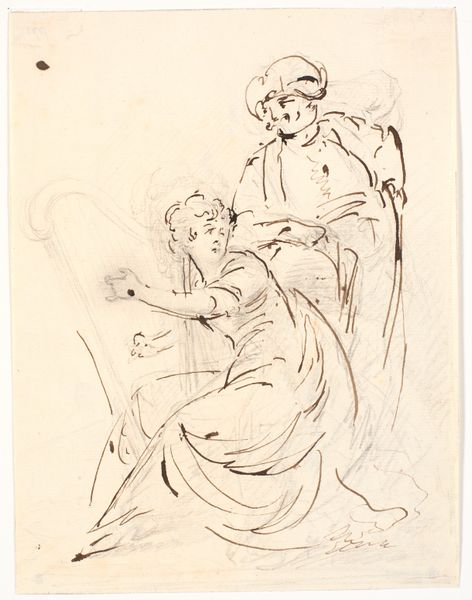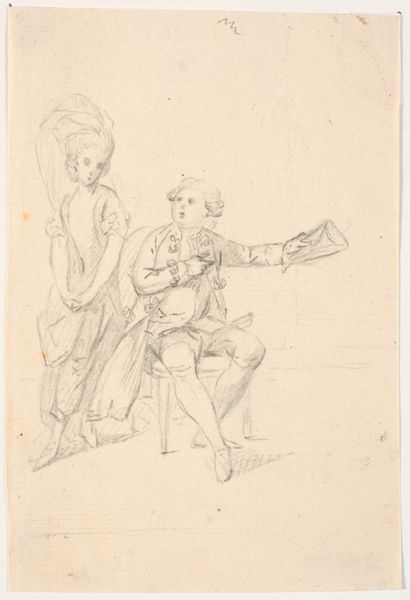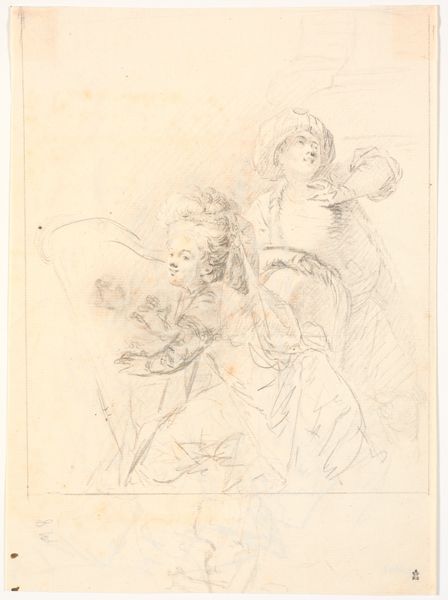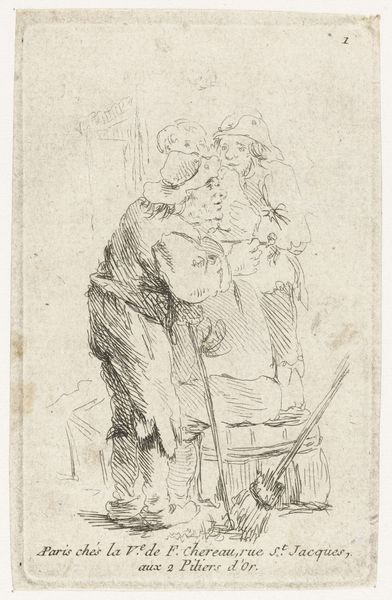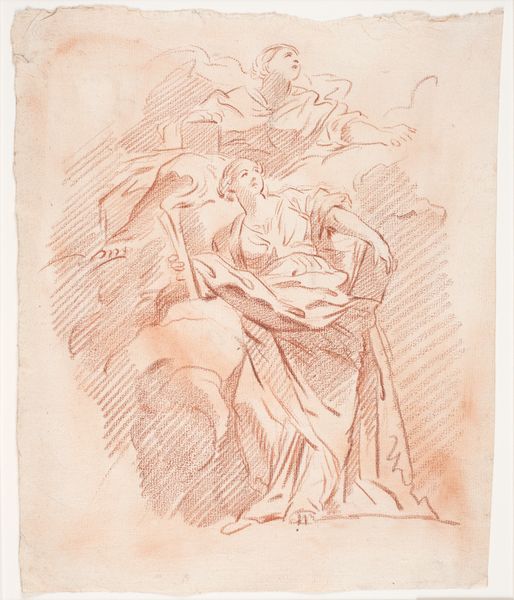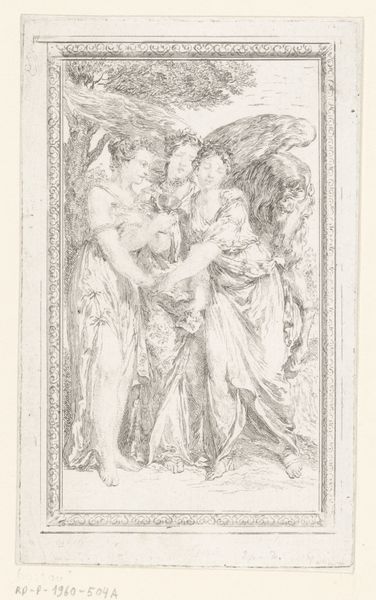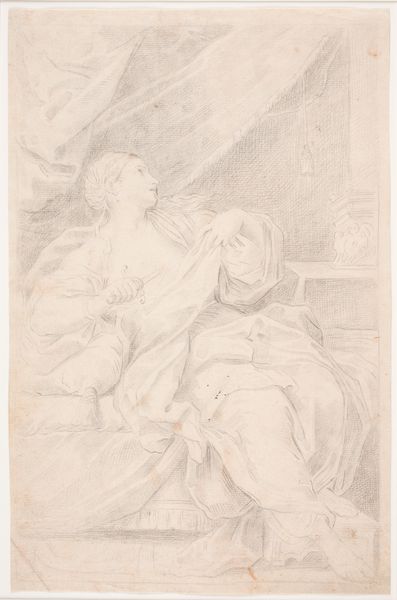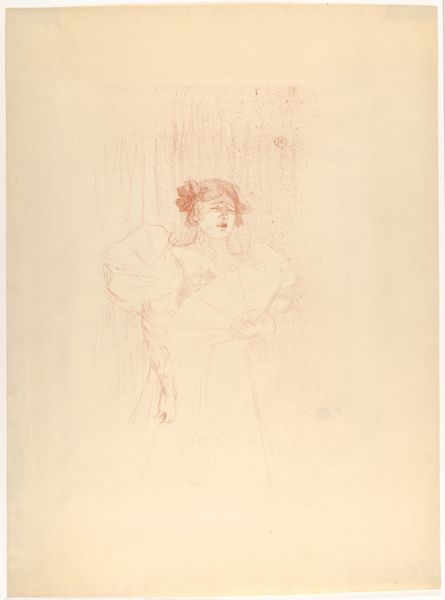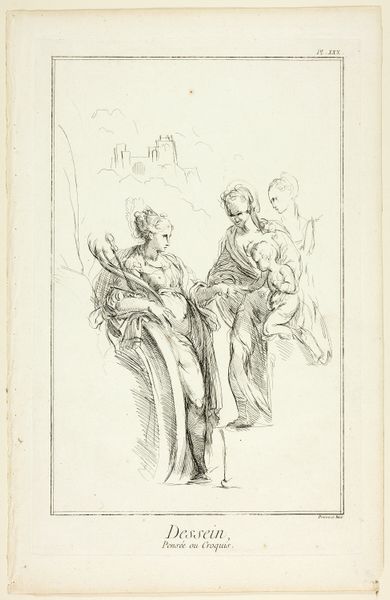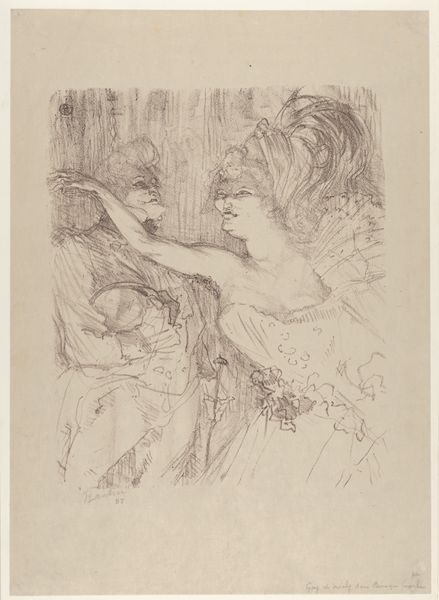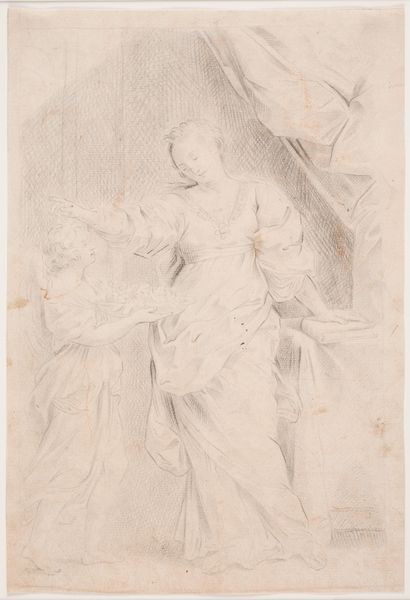
drawing, pencil
#
drawing
#
neoclacissism
#
pencil sketch
#
pencil
#
genre-painting
Dimensions: 229 mm (height) x 162 mm (width) (bladmaal)
Curator: C.A. Lorentzen’s "Siddende dame med tre børn, en hund og en kat," created between 1746 and 1828 and residing here at the SMK, presents an intimate scene. The medium, pencil on paper, allows us a glimpse into a moment of domestic life. What are your first thoughts? Editor: There’s a lightness to it, almost fleeting, like a memory being sketched out. It's a gentle and seemingly candid portrayal of motherhood. Curator: The neo-classical lines suggest an interest in form, even within this informal genre scene. Look closely at how Lorentzen uses hatching to define the drapery of the woman's gown and the rounded forms of the children. It suggests that the value of these forms derives directly from a high valuation on labor. Editor: Absolutely, but within a very particular societal context. This woman, likely of a certain class, is surrounded by signs of her status. The way the children cling to her, almost possessively, hints at the immense responsibility placed on women within that family structure, yet we see her represented in domestic idyll. Her identity appears inextricably intertwined with her role as mother, an image continuously reinforced through art history. Curator: Consider the materials themselves. The graphite of the pencil, derived from mined resources, allows for both precision and the ability to suggest a range of values. And it’s important to reflect that Lorentzen had the material means to produce and preserve such pieces. The ease of drawing enables it to serve many practical and imaginative uses. Editor: And thinking about labor again, this piece, like so many genre scenes of its time, could be considered a construction—not merely a depiction—of "ideal" family life. What realities did these images mask concerning women’s agency, race, or the lives of the working classes who are pointedly excluded here? Curator: Perhaps we're also seeing the development of mass culture through the creation of intimate art like this. These small pieces can quickly go into circulation among a local group. Editor: In closing, this deceptively simple sketch offers a lens into the intricate social and cultural dynamics of its time and reveals the ever present complexities around gender roles. Curator: Precisely. Through its accessible medium and carefully constructed composition, we gain valuable insight into 18th-century societal ideals around labor, the development of artistic materials, and mass culture.
Comments
No comments
Be the first to comment and join the conversation on the ultimate creative platform.
